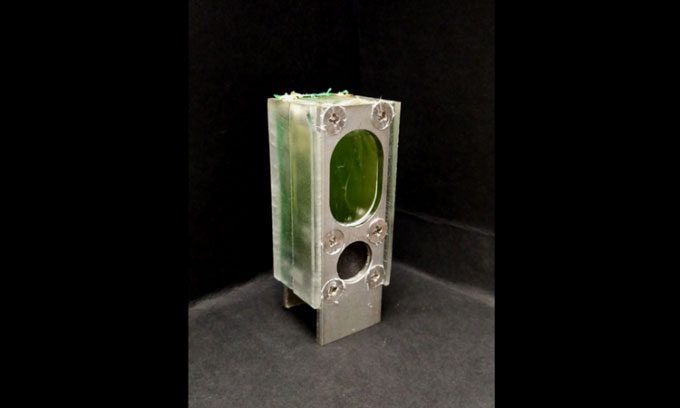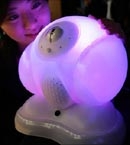Scientists Develop Power Supply System for Computers Using Cyanobacteria in a Sealed Box Equivalent to an AA Battery.
Expert Christopher Howe at the University of Cambridge and his colleagues operated a computer for 6 months powered by cyanobacteria. The new research was published in the journal Energy & Environmental Science on May 12.

Cyanobacteria power supply system for computers. (Photo: Paolo Bombelli)
In the study, the cyanobacterium Synechocystis sp. PCC 6803—commonly referred to as cyanobacteria—can produce oxygen through photosynthesis when exposed to sunlight. It was contained in a sealed box made of aluminum and transparent plastic, equivalent in size to an AA battery.
The computer was placed on a windowsill in a research team member’s home during the Covid-19 lockdown from February to August 2021. During this period, the cyanobacteria-powered battery provided a continuous current through the positive and negative terminals to operate a microprocessor.
The computer operated in cycles of 45 minutes. The team used it to compute the sum of consecutive integers to simulate computational tasks, requiring 0.3 microwatts of power, and 15 minutes in standby mode, needing 0.24 microwatts. The microcontroller measured the device’s output and stored this data in the cloud for the research team to analyze.
Howe stated that there are two potential hypotheses regarding the power source. The first is that the bacteria themselves generate electrons, thereby producing electricity. The second is that the bacteria create conditions that cause the aluminum anode in the box to corrode in a chemical reaction that produces electrons. The experiment was conducted with no significant wear on the anode. Therefore, the research team believes that the bacteria produce most of the electricity.
According to Howe, this new method could be scaled up for broader application, but further research is needed to determine the extent of that increase. He noted that placing a device on a rooftop would not provide enough electricity for a household. However, the device could be useful in rural areas of low- and middle-income countries or for tasks where even a small amount of energy is beneficial, such as environmental sensors or charging mobile phones.
The bacteria produce their food through photosynthesis, and the battery can continue to generate electricity even in the dark. Researchers believe this is because the bacteria process excess food.
The team of experts believes that efficient, low-cost devices can be manufactured, and commercial applications will be feasible within five years. They have also discovered other algal species that generate stronger currents and assert that similar photosynthetic generators could become a power source for many small devices in the future without the need for rare and unsustainable materials used in batteries.




















































